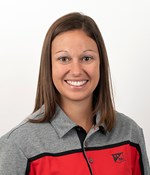Alfalfa Winterkill Assessments
BY Dairyland Seed
The combination of moderate winter temperatures and/or heavy snow cover across the Midwest this winter should be friendly to our alfalfa stands this spring. Many areas experienced little to no frost in the ground as well, which should also minimize heaving events. On a broad scale, our biggest concern is the excessive amounts of moisture that have been received in many areas during the last few months, particularly in the north. As always, the condition of the alfalfa crop coming out of winter is very localized, so we need to assess stands individually. Here are some reminders as you get into your fields:
- Recall any notes from fall stand assessments for comparison.
- Mid-April is a great time for stand assessments. Stands need to be coming out of dormancy, greening up for the year ahead.
- What to look for:
- Dig plants and split the taproot open. Roots should be firm, white, and smell like fresh cut alfalfa. Brown/yellow, rotten, and mushy tap roots/crowns are dead plants.
- The presence of black lesions (likely phytophthora), while not good, can be tolerated if the crown has not been choked out.
- Frost heaved plants will have the crowns pushed above the soil surface. If crowns are heaved only ~1/2”, there is a good chance they will be pulled back into the ground and be ok.
- Stand assessments are best done with stem counts. As stands age, the number of plants per square foot will decrease, but the number of stems per plant should be increasing to compensate. Survey the entire field.
| Stem Count per sq ft | Assessment | Yield Potential | Comments and Actions |
| 55 or more | Good | 100% | Good stands. |
| 40-55 | Marginal | ~80-100% | Decision will depend on operation. Extend longevity by reducing stress: good fertility and insecticides. Factor in feed needs, tolerance for poor stands, budget, etc. |
| Less than 40 | Poor | <80% | Terminate or consider rescue options. Possibly take 1st crop then terminate. |
 |
 |
 |
| Brian Weller Western Region 507.456.3034 |
Rod Moran Central Region 217.972.9839 |
Dan Ritter Central Region 219.863.0583 |
 |
 |
 |
 |
| Branden Furseth Northern Region 608.513.4265 |
Mark Gibson Eastern Region 260.330.8968 |
Amanda Goffnett Eastern Region 989.400.3793 |
Ryan Mueller Product Portfolio and Agronomy Leader 608.295.0912 |
